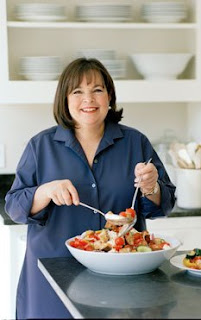
Tap dance is a form of dance characterized by using the sounds of tap shoes striking the floor as a form of percussion. Two major variations on tap dance exist: rhythm (jazz) tap and Broadway tap. Broadway tap focuses on dance; it is widely performed in musical theater. Rhythm tap focuses on musicality, and practitioners consider themselves to be a part of the jazz tradition.
The sound is made by shoes that have a metal "tap" on the heel and toe. There are different brands of shoes which sometimes differ in the way they sound.
History
Tap dance is an indigenous American dance form with roots that go back 300 years to British and West African musical and step dance traditions. These fused and evolved into a form of dance called "jigging", which was taken up by minstrel show dancers in the 1800s. Tap dance then became a popular stage entertainment.
As minstrel shows began to decline in popularity, tap dance moved to the increasingly popular Vaudeville stage. Due to Vaudeville's unspoken "two-colored rule", which forbade blacks to perform solo, many Vaudeville tap acts were duets. One such duo was "Buck and Bubbles," which consisted of John "Bubbles" Sublett tap dancing and Ford "Buck" Washington playing a piano. The duo performed a "Class Act", a routine in which the performers wore tuxedos, effectively distinguishing them from the older minstrel show concept of tap dancers as "grinning-and-dancing clowns."
Tap dancers make frequent use of syncopation. Choreography typically starts on the eighth or first beat count. Another aspect of tap dancing is improvisation. Tap dancing can either be done with music following the beats provided, or without musical accompaniment; the latter is known as "a cappella" tap dancing.
Hoofers are tap dancers who dance primarily "closer to the floor", using mostly footwork and not showing very much arm or body movement. This kind of tap dancing, also called rhythm tap, was employed by slaves in America.
Steve Condos developed an innovative rhythmic tap style that influenced the work of later tap dancers such as Gregory Hines and Savion Glover. The majority of early hoofers, such as Sammy Davis Jr., Glover, Hines, and LaVaughn Robinson were African American men. Savion Glover helped bring tap dance into mainstream media by choreographing Happy Feet, a film about a tap dancing penguin. Another well-known tap film is 1989's Tap, starring Gregory Hines and many old-time hoofers.
Early tappers like Fred Astaire provided a more ballroom look to tap dancing, while Gene Kelly introduced ballet elements and style into tap. This style of tap led to what is today known as Broadway style, which is popular in American culture. It often involves high heeled tap shoes and show music, and is usually the type of tap first taught to beginners. Examples of this style are found in Broadway musicals such as Anything Goes and 42nd Street.
Taps are mounted to the sole of the shoe with screws, and sometimes adhesive as well. The screws are driven into a soundboard – a thin fiberboard integrated into the sole that can be firmly "gripped" by the screws – to reliably attach the tap to the shoe. When no adhesive is used, the screws can be loosened or tightened to produce different sounds, whereas tonal quality is fixed when adhesive is used.
If you want to read more, go here: https://en.wikipedia.org/wiki/Tap_dance
When I was a late teen and had taken tap dancing, I taught a tap class to little girls. "Shuffle hop step"
- 1 cup chopped pecans
- 1 cup packed light brown sugar
- 1/3 cup all-purpose flour
- 1/2 cup (1 stick) butter, softened, divided
- 1/4 cup sweetened flaked coconut (optional)
- 2 (29-ounce) cans sweet potatoes, drained and mashed
- 3/4 cup granulated sugar
- 2 eggs
- 1/2 cup milk
- 1 teaspoon vanilla extract
- 1/2 teaspoon salt
- Preheat oven to 350º. Coat a 3-quart casserole dish with cooking spray.
- In a medium bowl, combine pecans, brown sugar, flour, 1/4 cup butter, and the coconut, if desired; mix until crumbly, then set aside.
- In a large bowl, combine remaining ingredients, including remaining butter; mix well. Spoon into casserole dish and sprinkle evenly with pecan mixture.
- Bake 45 to 50 minutes, or until bubbly and heated through.





HOW TO OBSERVE
NATIONAL GROUND HOG DAY HISTORY
“Last Tuesday, the 2nd, was Candlemas day, the day on which, according to the Germans, the groundhog peeps out of his winter quarters and if he sees his shadow he pops back for another six weeks nap, but if the day be cloudy he remains out, as the weather is to be moderate.”







